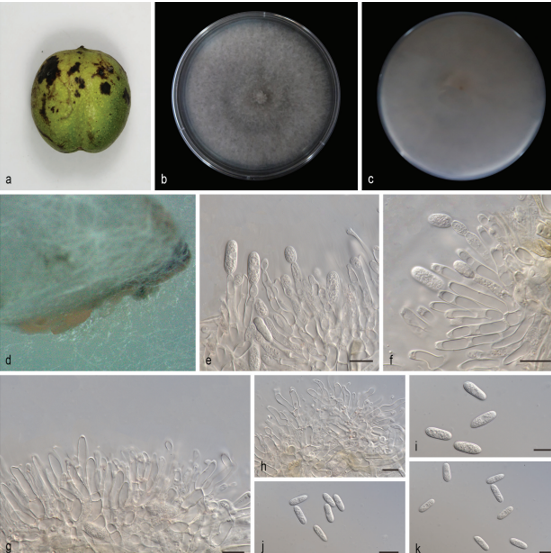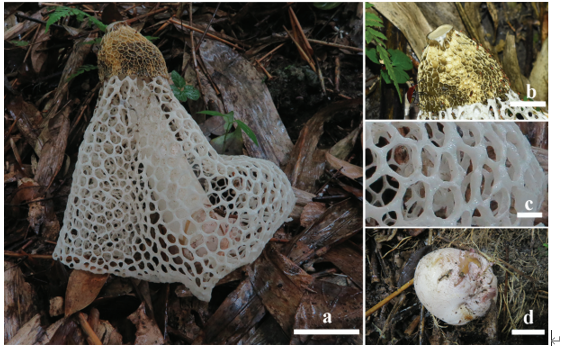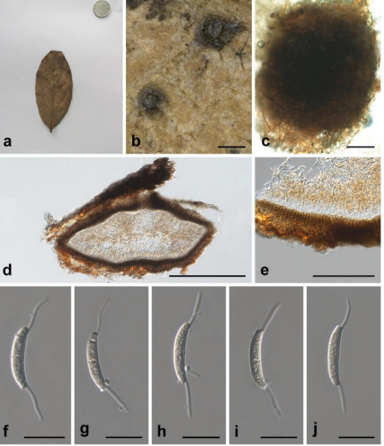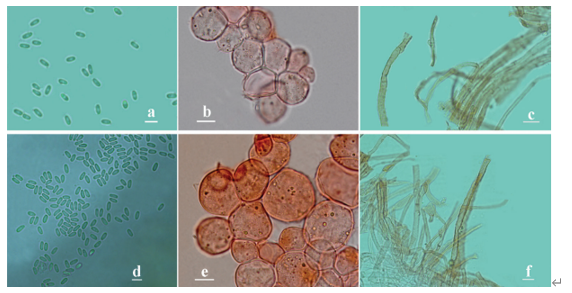Ophiostoma hongxingense Z. Wang & Q. Lu 2020
MycoBank MB 830611
Holotype: China: Heilongjiang province: Hongxing, from Ips subelongatus on Larix gmelinii, July 2017, Q. Lu (CXY 2021 – holotype; CFCC 52695 – ex-type culture).
Morphological description
Sexual morph not observed. Asexual morph: hyalorhinocladiella-like. Hyalorhinocladiella-like morph: conidiogenous cells arising directly from superficial hyphae, (10.5–) 14–22.5 (− 28.5) × (1.5–) 2–2.5 (− 3) μm. Conidia hyaline, smooth, ovate to elliptical, aseptate, (5–) 5.5–6.5 (− 8) × (2–) 2.5–3.5 (− 4) μm. Cultures: Colonies on 2% MEA at 25 °C reaching 58mm diam. in 5 d, initially hyaline, discoloring progressively to dark olivaceous from the centre of the colonies to the margin, the colonies edge thinning radially; mycelium superficial on the agar. Optimal temperature for growth at 30 °C, no growth observed at 5 °C and 40 °C.
Habitat: L. gmelinii or L. olgensis pure plantation.
Distribution: Inner Mongolia Autonomous Region and Heilongjiang province, China.
Ecology: Isolated from Ips subelongatus infesting dying Larix gmelinii and L. olgensis.
GenBank Accession: ITS/LSU MK748194; β-tubulin gene MN896027; EF-1α MN896068; calmodulin gene MN896089
Notes: Ophiostoma peniculi, O. macroclavatum, and O. pseudocatenulatum can be distinguished from O. subelongati and O. hongxingense by the presence of synnemata, which is absent from the latter two. The optimal growth temperature of O. peniculi, O. subelongati, and O. hongxingense is 30 °C, while that of O. macroclavatum and O. brunneolum is 25 °C. For O. subelongati and O. hongxingense, no growth observed at 5 °C and 40 °C, but O. pseudocatenulatum can still grow at 5 °C. In terms of colonies characteristics, O. peniculi, O. subelongati, and O. hongxingense grow faster than the above three species on 2% MEA at 25 °C.
Reference: Wang Z, Liu Y, Wang HM et al. (2020) Ophiostomatoid fungi associated with Ips subelongatus, including eight new species from northeastern China
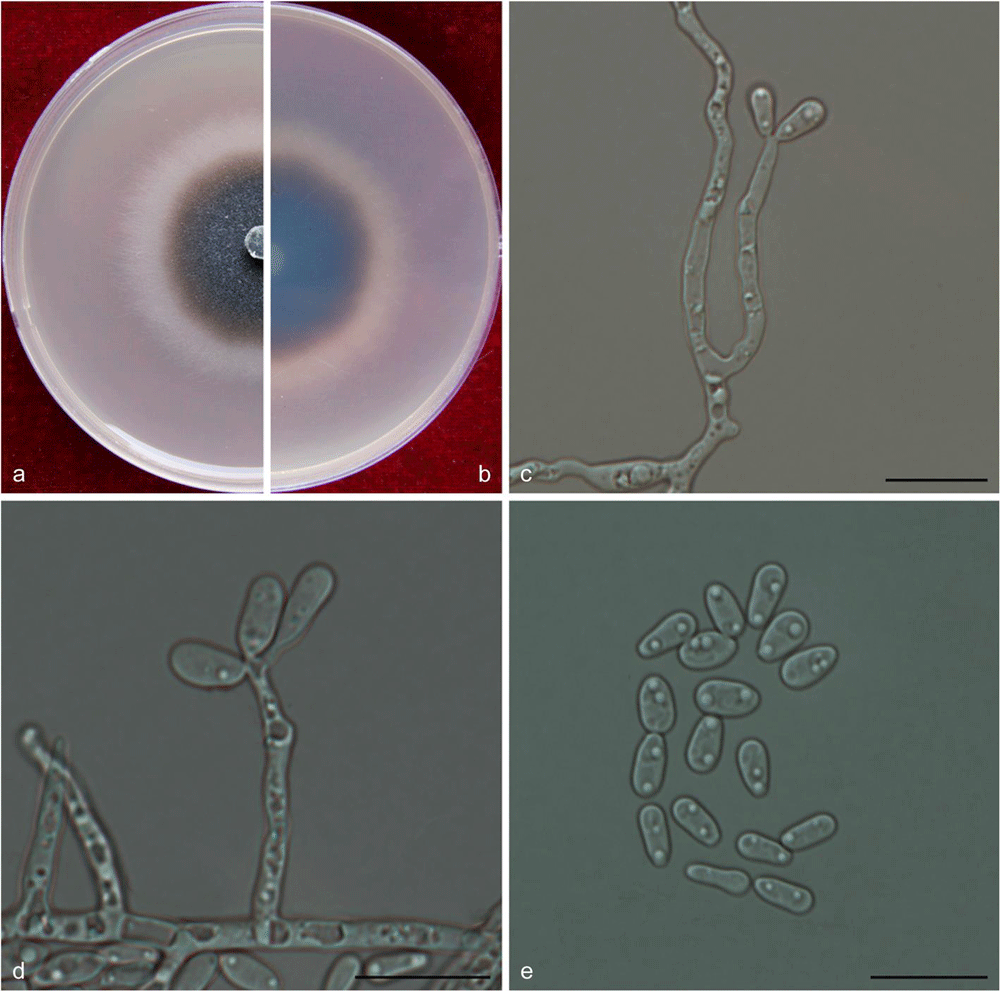
Ophiostoma hongxingense. Morphological characteristics of O. hongxingense (CFCC 52695). a–b. Five-day-old cultures on 2% MEA; c–e. Hyalorhinocladiella-like asexual morph: conidiogenous cells and conidia. Scale bars: c–e = 10 μm


